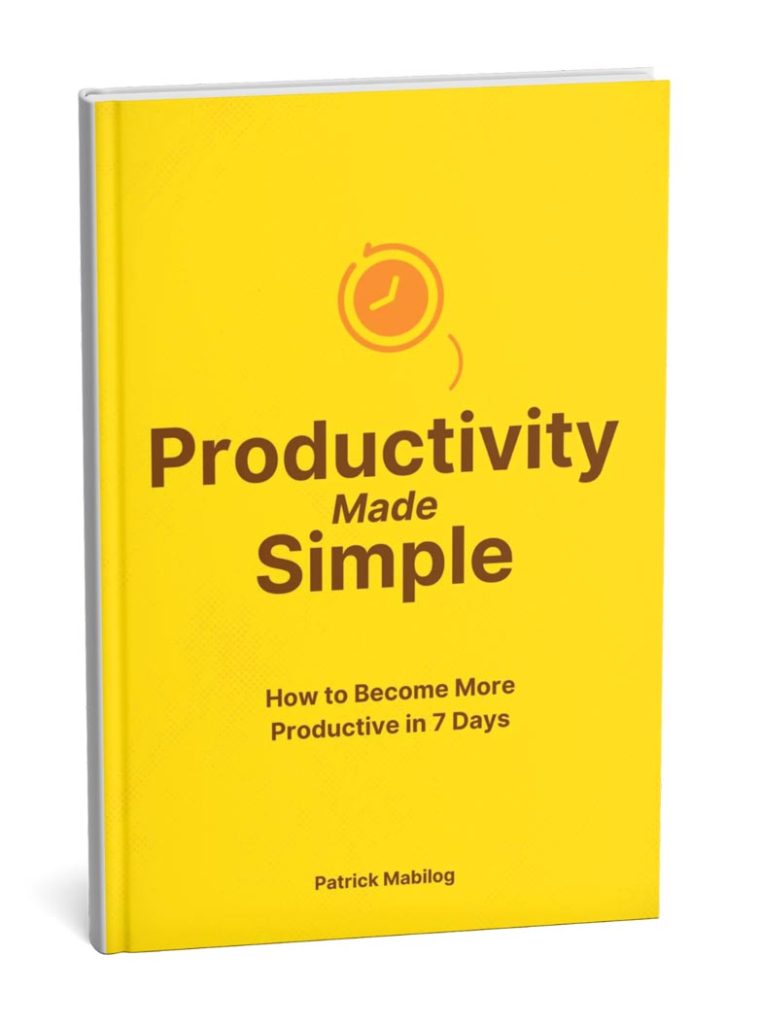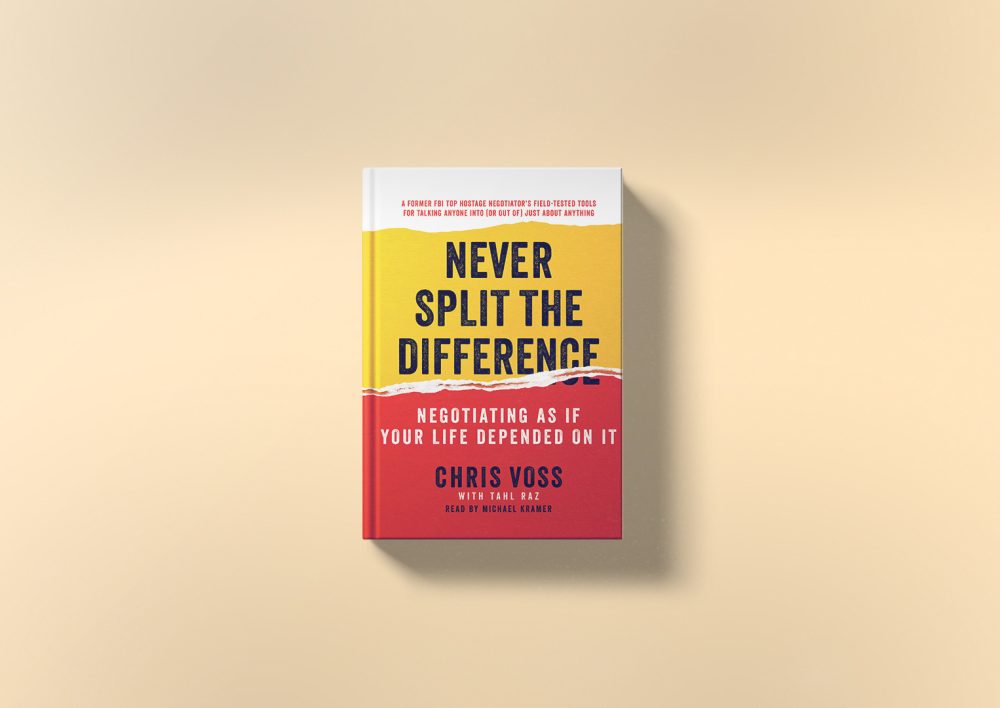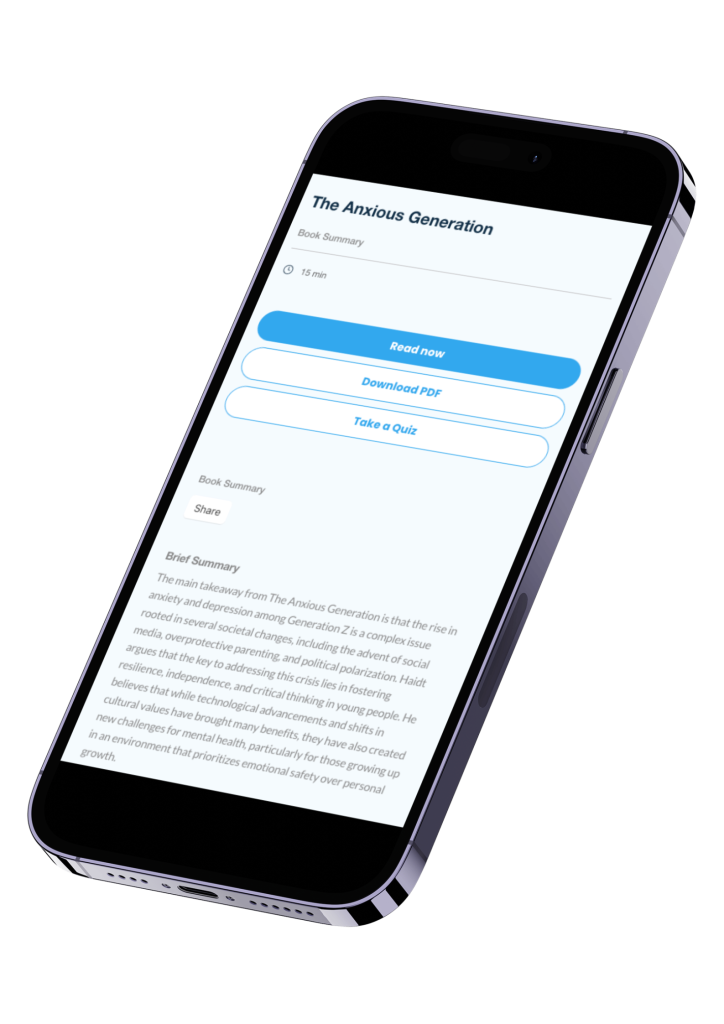Most people think that negotiations are only important in two situations: sales and hostage crises. Most people are wrong. After reading this Never Split the Difference summary, I hope that you realize that you need great negotiation skills if you want to get ahead.
If there’s anything Chris Voss’ book taught me, it’s that we don’t understand negotiations, human psychology, building win-win relationships, and business as well as we should. Let’s take a deeper dive.
About the Author

You might not have heard the name Chris Voss before. Neither did I before picking up “Never Split the Difference.” He is a renowned expert in the field of negotiation, with an impressive career as a former FBI hostage negotiator.
Today, Chris is the CEO of The Black Swan Group, a consultancy firm that trains individuals and organizations in the art of negotiation. Voss takes a unique approach with his negotiation framework. It blends his extensive experience in crisis with insights from psychology. I find that this is what makes his techniques both practical and deeply human.
Voss also has a background that includes teaching at Harvard and Georgetown Universities. He brings a wealth of knowledge to the table, aimed at helping people negotiate more effectively in their personal and professional lives.
Unlock Key Book Insights in 15 Minutes with Sumizeit
Get essential lessons, insights, and strategies with bite-sized book summaries. Sumizeit helps you save time and stay ahead with expert-curated summaries from top business books.
Sign up today and start learning in just 15 minutes a day!
What’s Never Split the Difference About?
If you had to call “Never Split the Difference: Negotiating As If Your Life Depended On It” one thing, revolutionary would be barely cutting it. The book mainly teaches about the baselines and best-practices on negotiation based on Chris Voss’s real-life experiences as an FBI hostage negotiator.
The book offers a new perspective on negotiation. One thing that jumps out is how it challenges the conventional win-win approach. Voss’ book also provides a method of understanding and influencing the other party’s emotions and perceptions. Voss’s techniques are designed to be practical and applicable in various scenarios. You can use it in high-stakes business deals or even everyday personal interactions.
At its core, “Never Split the Difference” teaches that compromising or splitting the difference is never the best negotiation strategy. Instead, it’s about getting what you want while making the other party feel satisfied with the outcome. Some might consider this manipulation. I have to admit that that’s how I felt when going through some pasts of the book. But take what you like and leave the parts that violate your values and there are still some great points to take from this book.
Some other important lesssons in this book include the importance of empathy, tactical empathy, and strategic communication.
Chapter Summaries of Never Split the Difference
Here’s a deeper dive into each of the book’s chapters and a quick synopsis:
1. The New Rules
In the opening chapter, Voss introduces the concept of tactical empathy. To serve the book’s context, he defines it as understanding the emotions and perspectives of the other party as a means to influence their decisions.
Many traditional negotiation strategies often fall short. Over the years, Voss’ methods developed through years of high-stakes negotiations, have led to better outcomes. Voss highlights the importance of listening and the power of silence. Empathy also sets the stage for the techniques he elaborates on in subsequent chapters.
2. Be a Mirror
This chapter focuses on the technique of mirroring. This technique involves reflecting back the words and emotions of the other person to build rapport and trust. I learned this from another source before (a coaching training program at a company I used to work for). But this book really unpacked the practical implications of mirroring mastery.
Voss explains that mirroring helps create a connection and encourages the other party to open up. He provides practical examples and exercises to help readers master this simple yet powerful technique.
3. Don’t Feel Their Pain, Label It
Voss introduces the concept of labeling emotions. This is a technique he uses to identify and acknowledge the feelings of the other party. Labeling emotions lets you diffuse negative feelings and create a more positive negotiating environment.
Voss provides examples from his FBI days to illustrate how labeling can be used effectively in high-pressure situations. Most people think that labeling is about agreeing or disagreeing, but it’s more about understanding and addressing underlying emotions.
4. Beware “Yes”—Master “No”
In this chapter, Voss argues that “No” is not the end of a negotiation but the beginning of a deeper conversation. Most people often say “Yes” to appease the other person, but then slowly fade out.
On the other hand, “No” is a decision. Understanding and respecting “No” is what creates more honest and productive negotiations. Voss provides strategies for getting to “No” and using it to guide the negotiation towards a mutually beneficial outcome. He also discusses the importance of calibrated questions to explore the reasons behind the “No” and find paths to agreement.
5. Trigger the Two Words That Immediately Transform Any Negotiation
The two phrases you need to look out for in any negotiation: “That’s right.” When the other party says “That’s right,” it indicates that they feel understood and validated.
Voss explains how to guide the conversation to elicit this response. Mastering this will help you when building trust and paving the way for agreement. He provides examples of how this technique has been used successfully in various negotiations.
6. Bend Their Reality
This chapter discusses the importance of framing and how it can influence the other party’s perception of the negotiation. Framing is building context and setting expectations. Doing this lets negotiatiors bend the reality of the situation in their favor.
Voss introduces the concept of anchoring and the use of deadlines and urgency to drive decisions. He also talks about the importance of giving the illusion of control to the other party, making them feel empowered while subtly guiding them towards your desired outcome.
7. Create the Illusion of Control
In this chapter, Voss explains how to use calibrated questions to give the other party the illusion of control. These questions are designed to guide the conversation and uncover valuable information without making the other party feel pressured or defensive. Voss provides a list of effective calibrated questions and explains how to use them strategically.
8. Guarantee Execution
Voss discusses the importance of ensuring that agreements are executed as planned. He introduces the concept of the “black swan,” an unexpected piece of information that can significantly impact the negotiation.
Chris then provides strategies for uncovering black swans and using them to guarantee successful execution. He also highlights the importance of clear communication and follow-through in maintaining trust and achieving desired results.
9. Bargain Hard
In this chapter, Chris delves into the tactical aspects of bargaining, providing techniques for negotiating effectively under pressure. He discusses the importance of preparation, understanding your own and the other party’s bargaining position, and using tactical empathy to create leverage. Voss also covers the role of emotions in bargaining and how to manage them to maintain a strategic advantage. He provides practical tips for staying calm and focused during high-stakes negotiations, ensuring that you can bargain hard without alienating the other party.
10. Find the Black Swan
The final chapter focuses on finding and leveraging black swan. These are the hidden pieces of information that can transform the negotiation. Chris explains how to identify black swans by being observant, asking the right questions, and building rapport.
Black swans are often the key to unlocking successful outcomes in seemingly impossible negotiations. Voss provides real-life examples of how black swans have been used to achieve breakthrough results.
5 Major Themes in the Book
If you had to take just five important themes from the book home, these are the ones you should take when leaving the parking lot:
- Empathy and Understanding: Empathy and understanding the emotions and perspectives of the other party should be your first priority. This theme runs throughout the book. Voss shows how genuine connection and tactical empathy can lead to more successful negotiations.
- The Power of “No”: Contrary to traditional negotiation strategies that focus on getting to “Yes,” the book argues that “No” is a critical part of the negotiation process. Understanding and respecting “No” can open the door to deeper conversations and better outcomes.
- Effective Communication: Voss provides numerous techniques for effective communication. My most important takeaways were mirroring, labeling, calibrated questions, and framing. Which leads to number four.
- Framing and Perception: The book highlights the importance of framing and perception in negotiations. Shaping the context and managing expectations lets you influence the other party’s reality and steer the negotiation in their favor.
- The Role of Hidden Information: Voss introduces the concept of the black swan. That hidden or unexpected information can significantly impact negotiations. Identifying and leveraging black swans will help you get breakthrough results.
Final Thoughts
What I appreciate most about Voss’s approach is its emphasis on empathy and understanding. Sure, at some level, it can feel manipulative and coercing. But you can take your own approach and tailor your negotiation framework to fit your preference and style.
We think of negotiation as a zero-sum game. After reading “Never Split the Difference,” you’ll see that it’s possible to achieve your goals while making the other party feel heard and respected (and who wouldn’t want to be on the receiving end of that?). This human-centered approach not only leads to better outcomes but can also actually build stronger relationships.
I highly recommend reading “Never Split the Difference,” especially if you want to improve your negotiation skills. The insights and techniques shared by Voss are applicable in many situations and can make a significant difference in your ability to influence and persuade. If you’re serious about becoming a better negotiator, this book deserves a place on your bookshelf.
Looking for more book summaries? You should read these ones out next:






